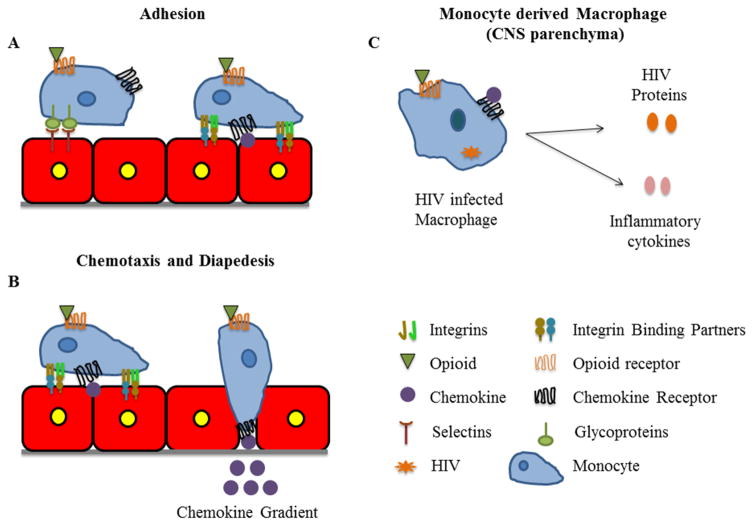Fig. 1.
Monocyte migration across the blood brain barrier (BBB) and consequences of HIV infection on monocyte derived macrophages. (A) Monocytes, both infected and uninfected, loosely adhere to the vasculature through the binding of their surface glycoproteins to selectins on the surface of endothelial cells. When a chemokine is presented on the endothelium, firm adhesion is promoted by the activation of integrins on the monocytes. (B) Monocytes then polarize and extend a leading edge that facilitates their diapedesis across the vasculature. (C) HIV infection of macrophages promotes the release of viral proteins and inflammatory cytokines that contribute to neuroinflammation. All of these processes can be regulated by opioids and opioid maintenance therapies.

